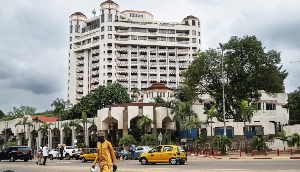African leaders, including to some extend, Paul Biya of Cameroon, returned from the August 4-6, US-Africa Leaders’ Summit with a mixed bag of pledges that could, if honoured, forge deeper transatlantic ties as well as the exploration of comprehensive and collaborative solutions to unlock the type of economic growth and opportunity that for Africa and the U.S. need.
While the Summit had political and diplomatic connotations, the economic aspect dominated the talks. The Washington gathering ushered America a window to advance U.S. Administration’s focus on trade and investment in Africa and highlighted America’s commitment to Africa’s security, and its democratic development.
Billions of new investments
At the conclusion of the Summit, the United States announced it was making a major and long-term investment of US$33 billion in Africa as part of ongoing efforts to increase the U.S.' economic footprint in the continent.
President Barack Obama stated that his administration and over 40 African leaders have made important progress in expanding trade, adding that the US$33 billion in new trade and investments “will help spur African development and support tens of thousands of American jobs.”
Obama explained that from that amount, $7 billion would go into promoting U.S. exports to and investments in Africa. U.S. companies announced new deals in clean energy, aviation, banking, and construction worth more than $14 billion, in addition to $12 billion in new commitments under the Obama’s Power Africa initiative from private sector partners, the World Bank, and the government of Sweden.
Taken together, these new commitments amount to more than $33 billion; supporting economic growth across Africa and tens of thousands of U.S. jobs.
Economists are unanimous that the US$33 billion in new trade and investments in Africa is largely insufficient for a continent counting 55 countries. However, the reality is that not all countries will benefit from this investment.
The distribution will be guided by the New U.S. Government Resources to Support U.S. Exports and Investment in Africa. Some of the resources include the Interagency Initiatives, U.S. Export-Import Bank, Millennium Challenge Corporation (MCC) and Overseas Private Investment Corporation.
Who got what?
The MCC, for example, will commit up to $2 billion in funding for new companies in Africa that facilitate private sector-led economic growth and poverty reduction, creating potential opportunities for U.S. companies.
This commitment includes $498 million over the next five years to support the turnaround of Ghana’s electricity sector and the stimulation of private investment.
This Compact represents an example of the catalytic impact of Power Africa interventions, which will help create the enabling environment to catalyze billions of dollars of private investment in Ghana.
During the Summit, President Uhuru Kenyatta managed to have Kenya included in the Power Africa initiative whose commitments reached $27 billion during the summit. Kenya, alongside Tanzania, will benefit from a wildlife protection initiative worth $65 million, together with South Africa, Gabon and Togo. They will also be sharing another $65 million for a counter-terrorism programme with Ghana, Mali, Tunisia, Niger and Nigeria.
The Republic of Uganda, Tanzania and Rwanda are included in a $110 million pledge for peacekeeping in Somalia, South Sudan and Central African Republic.
Other peacekeeping beneficiaries are Ghana, Senegal, and Ethiopia. Some $4 billion was equally allocated for maternal health and a pledge to extend the Africa Growth and Opportunity Act (AGOA) for 15 years for all 55 African countries.
What of Cameroon?
Cameroon is one of the few countries in Africa that returned from the US-Africa Leaders Summit almost empty handed. Though no concrete deals were made, important contacts were established between the Cameroon delegation and US investors.
President Biya, during the US-Africa business forum tried wooing American investors with assurances that “investing in Cameroon is a good risk.”
There is no gainsaying that Cameroon’s participation at the summit more than ever will solidify US-Cameroon economic relations, which date back to 1986 when both countries signed a Bilateral Investment Treaty.
Cameroon is eligible for preferential trade benefits under the African Growth and Opportunity Act (AGOA) - a trade preference program enacted in 2000 and it is at the center of U.S.-African engagement on trade and investment.
Cameroon's exports to the United States include petroleum, cocoa, rubber, timber, and coffee while imports from the United States include machinery, chemicals, aircraft, vehicles, and plastics.
The United States is a leading investor in Cameroon, largely through the Chad-Cameroon petroleum pipeline project. The United States and Cameroon have a bilateral investment treaty.
U.S. foreign direct investment (FDI) in Cameroon (stock) was $203 million in 2012 (latest data available), a 5.7% increase from 2011 and U.S. goods trade deficit with Cameroon was $36 million in 2013, a 35.6% decrease ($20 million) from 2012.
Cameroon is currently America’s 113th largest goods trading partner with $698 million in total (two way) goods trade during 2013. Goods exports totaled $331 million; Goods imports totaled $367 million. The U.S. goods trade deficit with Cameroon was $36 million in 2013.
Infos Business of Friday, 22 August 2014
Source: cameroonjournal.com













